Tel: 01474 876800 • Client Portal
- Who We Are
- What We Do
- Build
- Carpentry
- Building Works
- Commercial Flooring
- Commercial Glazing
- Commercial Locksmith
- Commercial Painting & Decorating
- Commercial Plastering
- Commercial Plumbing
- Commercial Refurbishment
- Commercial Roofing
- Design & Construction
- Electrical Installation
- Hard & Soft Landscaping
- Mechanical & Electrical
- Office Builders
- Office Fit Outs
- Office Heating
- Office Partitioning
- Office Relocation
- Site Management
- Maintain
- 24 Hour Helpdesk
- Access Control
- Air Conditioner Repair
- Air Conditioning Servicing
- Commercial Boiler Servicing
- Commercial Electricians
- Commercial Ground Maintenance
- Commercial Pest Control
- Commercial Property Maintenance
- Drain Unblocking
- Emergency Callouts
- Emergency Light Testing
- Facilities Management
- Fire Alarm Testing
- Fire Extinguisher Testing
- Fire Sprinkler Testing
- Fixed Wire Testing
- Handyman Service
- Lift Servicing
- Office Health & Safety
- PAT Testing
- Planned Preventative Maintenance
- Reactive Maintenance
- Roof Maintenance
- TMV Maintenance
- Water Hygiene
- Clean
- Build
- How We Do It
- Why Use Us
- Contact
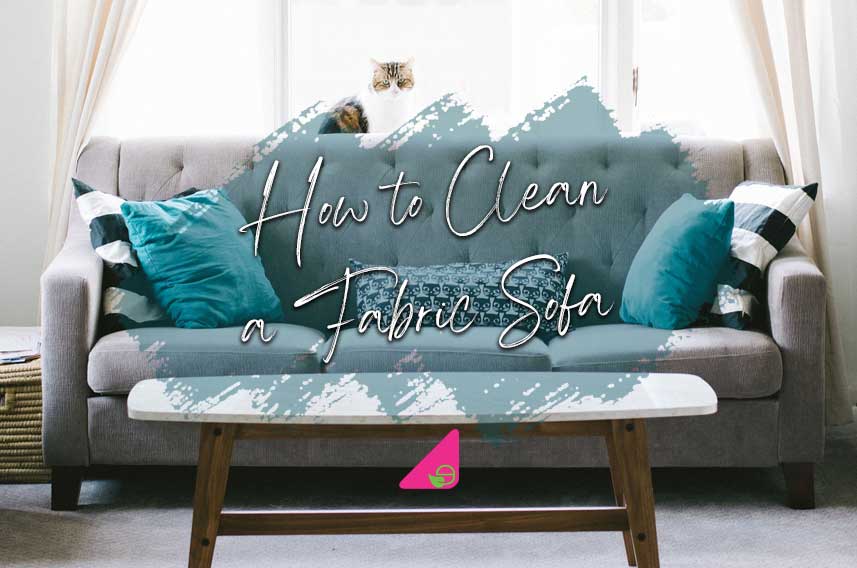
How to Clean a Fabric Sofa
Fabric sofas are a fantastic furniture choice for the office or home.
They provide affordable seating space and bring bursts of color to a room, serving a dual purpose as a bed in certain instances.
However, fabric sofas quickly become dirty and unsightly if not cleaned regularly.
Many sofa cleaning methods involve using soap and water, commercial products and at times industrial chemicals.
Fortunately, soap and water is a tried and tested cleaning method.
This article will explain that cleaning a fabric sofa is simple and easy.
Table of Contents
Read The Manufacturer’s Instructions First
When cleaning a fabric sofa, it is essential that you read the instruction manual before attempting any cleaning.
The instructions will contain a section with recommended cleaners and processes to follow.
If possible, try the recommended cleaning methods first before attempting one of your own.
If the recommended cleaning process are ineffective, proceed with alternate options with a degree of caution.
Fabric Cleaning Codes
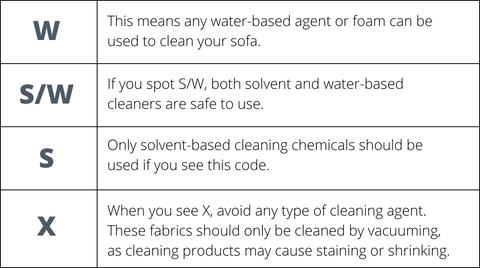
Fabric cleaning codes contain information regarding recommended cleaning methods for the sofa.
For example, W = water soluble, S = solvent-based cleaner only, WS = water or solvent cleaner, and X = vacuum only.
Fabric cleaning codes are often on double-sided tags.
One side will have instructions for cleaning the sofa cover, and the other will have instructions for cleaning the sofa itself.
The fabric cleaning tag is usually located on the cushions.
Required Tools & Materials
The right tools must be on hand to properly clean a fabric sofa.
A vacuum cleaner is the first essential tool you will need. A wet/dry vacuum is helpful but not critical.
A stiff brush, baking soda, spare towel, laundry detergent, and stain removal spray are required, depending on the situation.
A bucket is also necessary to hold soap, water, or a solvent solution.
Regularly Cleaning a Fabric Sofa
Regular sofa cleanings prevent dirt and grime buildup, and helps maintain a pristine appearance.
A full-scale wash is unnecessary every week.
However, weekly vacuuming combined with monthly washing is an effective regime.
Reduce intervals to bi-weekly washings depending on family size or usage.
Vacuum the sofa weekly, wash the cushions and cover monthly under light use, bi-weekly under moderate use, or weekly with heavy use.
Before vacuuming, brush the sofa using a stiff brush to loosen any dirt.
Brush the cushions and cover before removing any stains, as rushes respond better to dry dirt.
Vacuum the sofa to remove the loosened dirt.
Sprinkle baking soda evenly over the cover and cushions.
Check the instructions beforehand to ensure compatibility with baking soda and other cleaners.
Baking soda absorbs unpleasant odors, and is helpful for cleaning applications such as sofas.
Allow the baking soda to stand for 10-15 minutes.
Then vacuum the sofa again.
Removing Dark Stains from a Fabric Sofa
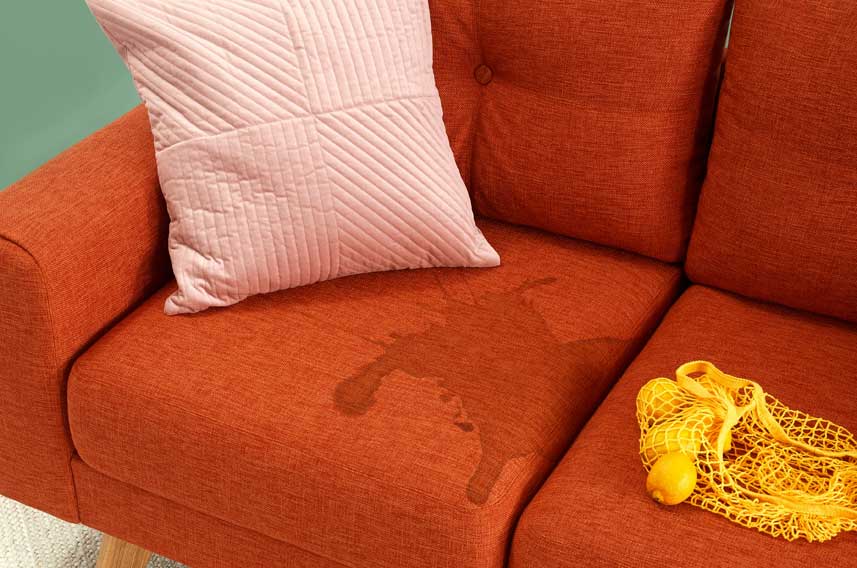
Despite efforts to keep them clean, fabric sofas can be susceptible to dark stains.
Fortunately, many stain removers and cleaning methods are available to address these issues.
The chance of successfully removing a stain is much higher when cleaned immediately, especially if the stain is dark.
The longer you wait, the more the stain sets.
Soak up excess liquid to avoid further stains and damage.
Blot the affected areas with a paper towel or rag.
Do not wipe, as this motion only encourages the stain to spread further into the fabric.
Remove excess liquid and mix ¼ cup white vinegar, ¾ cup warm water, and one tablespoon of washing up liquid.
Put the mixture in a spray bottle and mist the stain.
Blot as much as possible to remove excess liquid, then scrub.
Alternatively, use your favorite stain remover in place of a homemade solution.
Remember to read the fabric cleaning codes to avoid damaging the sofa fabric further.
After cleaning, allow the spot to dry completely.
Brush with a stiff brush, then vacuum to remove the final stain particles from the fabric.
Removing Water Stains from a Fabric Sofa
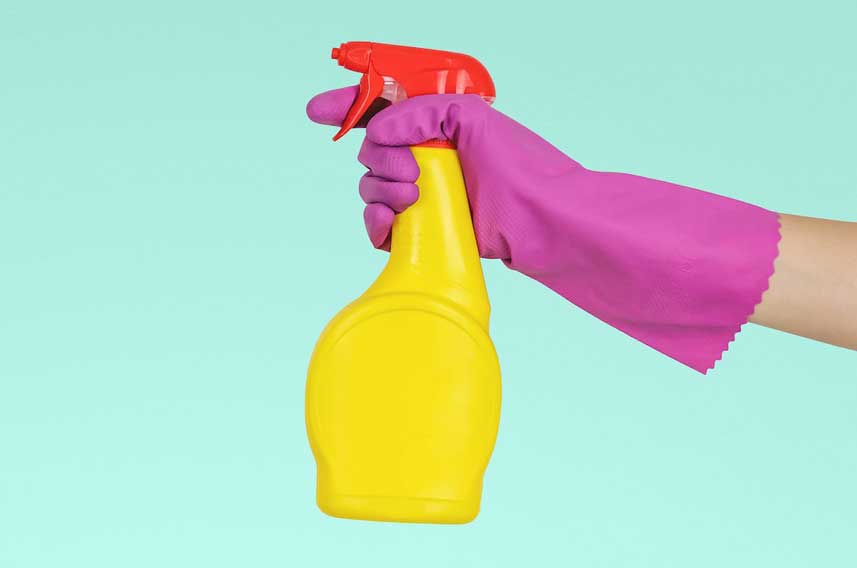
Water stains are a mild yet irritating form of stain.
Fortunately, water stains are easy to remove from fabric.
Water contains no dye and therefore, only creates a spot stain on fabric, making the process easier.
Blot the stain using a paper towel or a spare rag.
Remove all excess liquid in and around the stain.
Spray a small amount of cleaner on the stain.
Remember to read the fabric codes so as not to cause further damage to the sofa.
Only use cleaners the sofa can handle.
Once the cleaner is applied, blot the stain, scrub, then let dry,
Remove water stains using a steam cleaner or a regular clothes iron.
If using a regular clothes iron, ensure that the stain is moist.
Failure to moisten the stain will result in the heat fixating it in the fabric.
Sweep the iron across the moistened water stain until dry.
Let it dry completely, then vacuum the stain.
If using a steam cleaner, clean the entire sofa to ensure a uniform appearance afterward.
Steam creates moisture, so let the sofa dry overnight before using it again.
Removing Odours from a Fabric Sofa
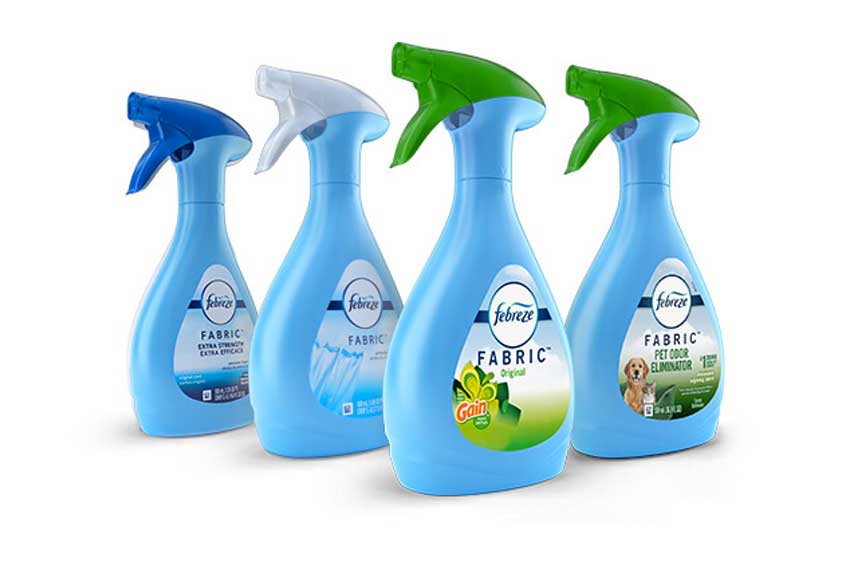
Unfortunately, Fabric acquires and retains odors of all forms.
Fortunately, cleaners can remove odours from fabric without excessive effort.
Baking soda is a simple yet effective method of odour removal, mainly from fabric.
Firstly, vacuum the sofa.
Then sprinkle baking soda on a small area of the sofa, and test it before covering the whole sofa with an even coating.
If it proves satisfactory, cover the sofa cover and cushions with plain baking soda.
Allow the baking soda to sit for 10-15 minutes.
After the baking soda has sat for 10-15 minutes, vacuum the sofa again.
The odour will be gone.
After applying baking soda and vacuuming the sofa, spray some scented Febreze over the sofa to give it a pleasant floral smell.
Brush the sofa to loosen dirt, then vacuum the sofa.
Spray your scented Febreze across the sofa cover and let it sit.
From now on, the sofa should exude a pleasant odour.
Steam Cleaning a Fabric Sofa
Steam cleaning a fabric sofa is an effective but labour-intensive process.
However, it is not incredibly complicated and can be performed relatively easily.
Brush the sofa to loosen dirt, then vacuum the cover and cushions.
Locate the fabric tag, then examine it to ensure it displays the “W” or “WS” codes.
These signify that water and solvents can clean the sofa.
Be warned that a steam cleaner will destroy a sofa that cannot be cleaned with water or solvents.
So be absolutely sure before you start!
A steam cleaner will be effective if water and solvents can clean the sofa.
Apply a fabric conditioner before steam cleaning to remove all stains and dirt.
Spot-test the steamer on a small surface area before cleaning the main body to ensure it’s effective and does not damage the sofa.
The manufacturer usually provides instructions on how to steam-clean their sofa safely.
If you hire a commercial steaming machine, make sure it’s heat-adjustable and comes with a nozzle attachment.
That way, the cleaner can be fine-tuned to effectively clean the couch.
If the machine is heat adjustable, set it to low-medium heat, and attach the nozzle designated for fabric.
A steam cleaner operates similarly to a vacuum cleaner, so use it in such a way.
After cleaning the sofa, set a fan to blow air over it and dry the surface more quickly.
Do not use the sofa until it is fully dry.
Cleaning Fabric Sofa Cushions
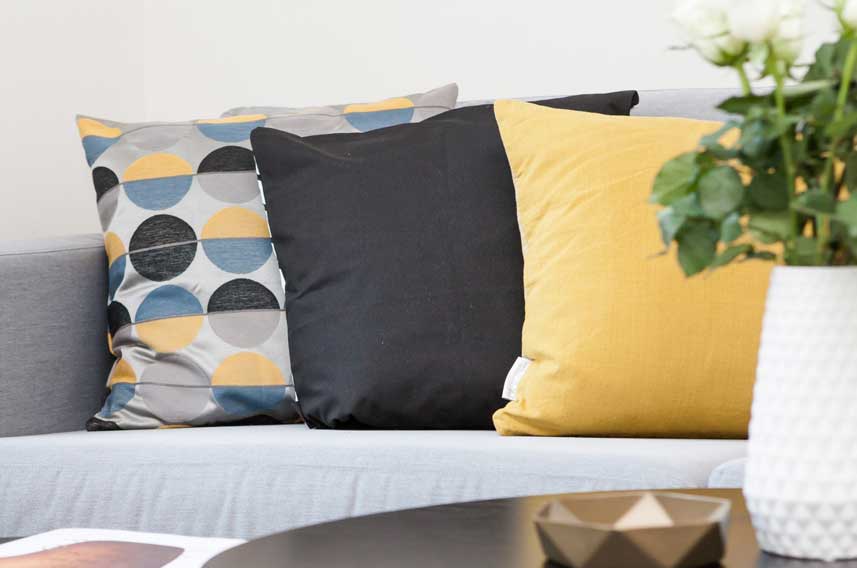
The cushions are the other crucial part of cleaning a sofa.
They must be adequately cared for and cleaned when necessary.
Surface cleaning is an easy step.
Brush the cushions with a stiff brush to loosen any dirt.
Once the dirt is loose, vacuum the cushions.
Once the cushions are brushed and cleaned, sprinkle baking soda to remove any bad smells or odours.
Allow the baking soda to sit for 10-15 minutes.
After 15 minutes, vacuum the cushions again, then spray with Febreze.
Washing sofa cushions and covers is a more involved process.
Locate the fabric tag on the sofa.
The code should designate either “W” or “WS,” indicating water or solvents can clean them.
If the cushion covers can be machine washed, do not wash them with other clothes.
Run a separate load in case the dye transfers under heat.
Sofa cushions cannot be machine washed and dried, as that process will destroy them.
Fill a bathtub with warm water and soap.
Submerge the cushions in the bathtub.
Scrub the cushions and wash them thoroughly.
Wash the cushions in a tub full of hot, clean water.
Then allow the cushions to air dry where air can circulate through and around the entire pillow.
Wait until the sofa cushions are completely dry before putting the covers back on and replacing them on the sofa.
Do not use a tumble dryer, as the foam in the pillows will dissolve.
Allow the cushions to dry for 1-2 days.
Alternatively, you can wash the outer foam without immersion in a bathtub.
Mix a solution of ¼ cup of white vinegar and 2 cups of cool water in a large bowl.
Dip a rag in the solution and gently blot the entire cushion surface.
Allow drying for 24 hours.
Professional Deep Cleaning a Fabric Sofa
If you are uncertain about your ability to clean fabric, many professional upholstery cleaning companies exist to help.
Professional upholstery cleaners perform deep cleaning on all upholstery they are contracted for, beginning with a thorough brushing.
After the cleaning, most recommend a 4-8 hour drying period depending on the item and level of cleaning required.
Professionals utilize industrial solutions designed to maximize cleaning power while minimizing damage to the sofa cover and cushions.
Professional-grade hot water extraction cleaners remove dirt, dust, grease, and grime while leaving behind a like-new cushion surface.
Additionally, neutral, non-toxic cleaning products minimize environmental damage and health risks.
Hiring a professional cleaning company to deep-clean a sofa is straightforward.
Call, explain what type of upholstery and cleaning is necessary, and book an appointment.
Conclusion
Fabric sofas can be challenging to clean and maintain, given their ability to retain stains, dirt and bad odours.
However, the methods and cleaners in this article will provide safe and effective ways to cleaning most fabric sofas, leaving it good as new!
Request a Callback
Recent Posts
- 10 Common Saniflo Toilet Troubleshooting Solutions 01th Jul 2025
- Importance of Personal Hygiene at Work 01th Jun 2025
- How to Clean a Toilet Brush 01th May 2025
- How to Clean Painted Walls 01th Apr 2025
- How to Get Oil Stains Out of Carpet 01th Mar 2025
- How to Clean a Fridge and Remove Bad Smells 01th Feb 2025
- How to Get Coffee Stains Out of a Carpet 01th Jan 2025
- How to Clean Gutters Correctly 01th Dec 2024
- What is PAT Testing? 01th Nov 2024
- How to Clean an Oven 01th Oct 2024

